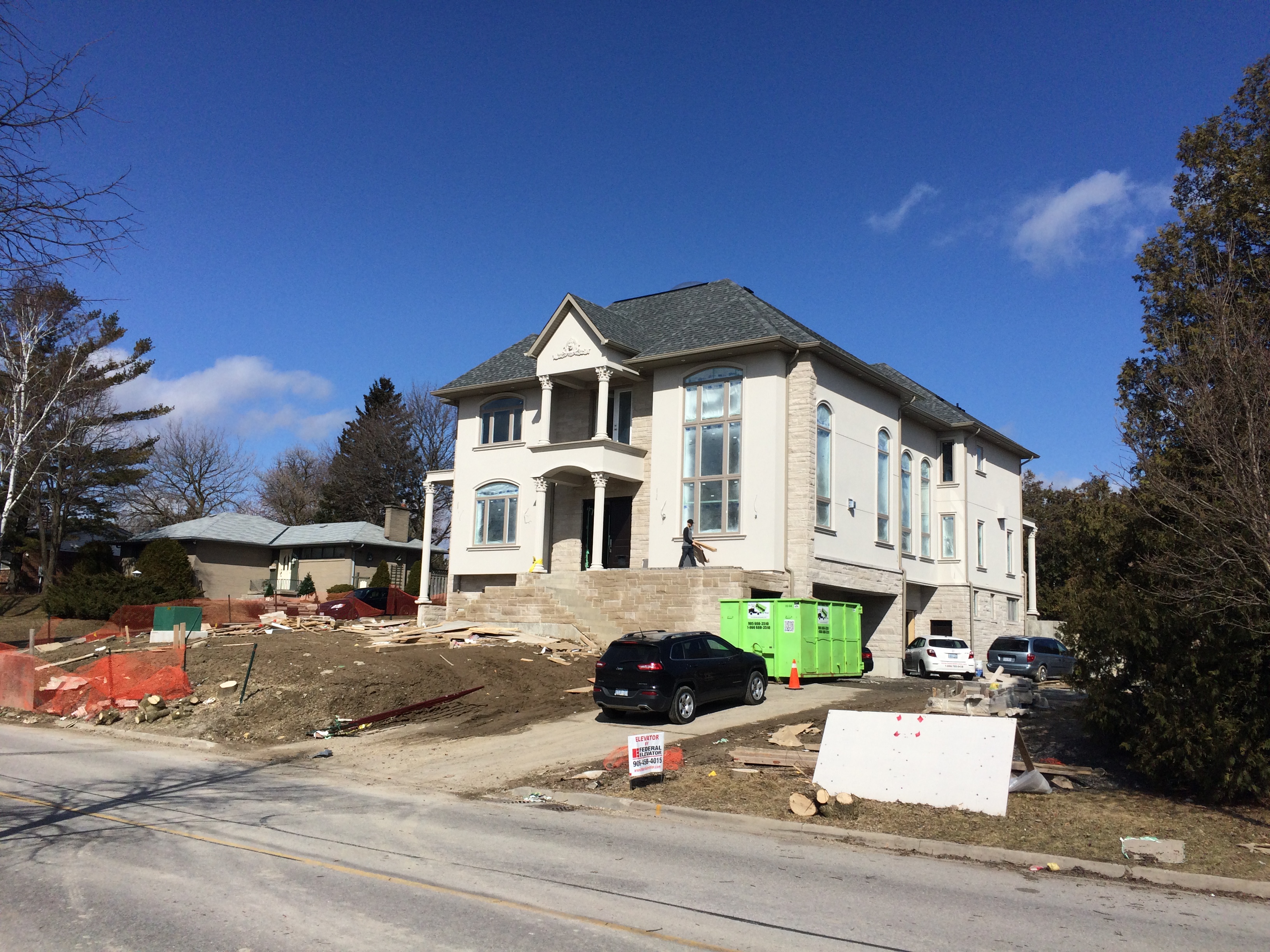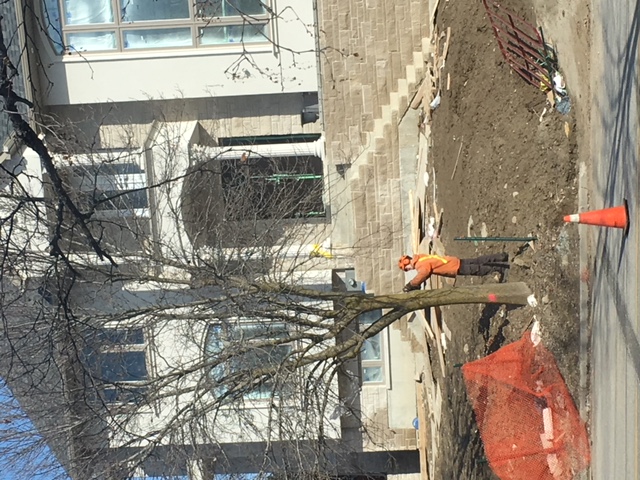- Details
- Written by Gordon Prentice
Last night (5 April 2018) Christine Elliott’s meet and greet in Newmarket had an unwelcome guest, the former PC candidate Charity McGrath. 
Three weeks ago McGrath was stripped of her status as official PC candidate for Newmarket-Aurora for cheating in the 2017 nomination.
CTV reporter Mike Arsalides tells us:
“Some hoped she’d skip the event after some reports that McGrath and her team falsely signed up seniors and veterans without their knowledge.”
He corners McGrath:
“Some people have questioned what has happened with you and now Christine parachuting in. What do you have to say to those seniors who feel swindled?”
McGrath looks at him but says nothing. You can see the cogs in her brain engage then disengage. She purses her lips. It is painful to watch.
I am left wondering if McGrath is going to have any role in the PC campaign. Is she going to be knocking on doors for Christine Elliott? Is she going to be working the phones for the former MPP for Oshawa? Will she nominate Elliott? Can she? Is she an eligible voter?
On the CTV clip I learn from a PC member that Oshawa is “somewhat similar” to Newmarket-Aurora. Hmmm. 
Does Christine Elliott really want voters to be reminded of the disgraceful shenanigans that led to her becoming the PC candidate for a riding which is a million miles from Oshawa?
Elsewhere… Doug Ford abandons the Campaign Bus.
Doug can run but he can’t hide.
And if he has nothing to say we shall find out soon enough.
This email address is being protected from spambots. You need JavaScript enabled to view it.
update on Saturday 7 April 2018: Newmarket's Lisa Heckbert confronts Christine Elliott demanding an assurance that people recruited fraudulently by Charity McGrath will be removed from the Newmarket-Aurora membership list.
To see CTV piece open Link in 3rd paragraph above and scroll to 11pm news on 5 April 2018.
- Details
- Written by Gordon Prentice
It is touch and go whether the proposed new GO Rail Station at Mulock Drive will ever materialise. 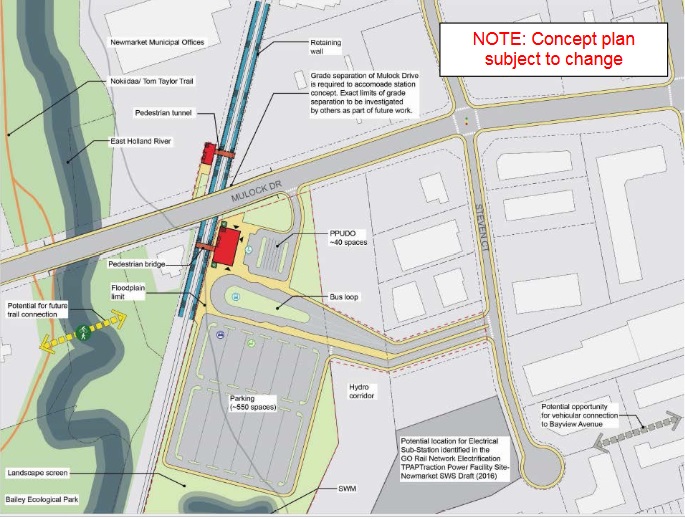
At the last Metrolinx Board meeting on 8 March 2018 there were questions about Mulock and whether the negatives outweighed the positives. As I listened to the debate unfold the omens didn’t sound too good. The Board will make a decision on the definitive list of new rail stations by October.
The Initial Business Case (IBC) in 2016 found:
“the Mulock station supports a few of the Strategic, Financial and Economic criteria for new stations and none of the Operations and Deliverability Case criteria. These results, which include high capital costs, negative net-present value (NPV) and significant construction challenges, are largely attributed to the requirement for a rail overpass and the proximity of the rail and station lands to the East Holland Creek, a Hydro corridor and established businesses.”
For all that, there is no doubt in my own mind that Newmarket needs a new GO Rail Station at Mulock - coupled with a 15 minute service extended northwards from Aurora. This changes all the metrics.
“happy dance”
When Newmarket Mayor, Tony Van Trappist, learned that Metrolinx was planning a new station at Mulock he told residents they should do a “happy dance”. As is his way, he then let events take their course instead of pushing mightily for the 15 minute service to be extended a couple of miles north from Aurora to Mulock.
At the 8 March Board meeting, Metrolinx abandoned grade separation which was previously deemed essential.
“The feasibility of the Mulock station concept is contingent on the grade separation of Mulock Drive, with a multi-span bridge over both the rail corridor and the East Holland River.”
Without grade separation we shall have to live with the old level crossing, slowing down traffic on one of the Town’s busiest roads.
Grade separation and the cost of doing nothing
Obviously Metrolinx cannot do grade separations all the way up the Barrie line. It would cost an arm and a leg. But doing nothing on major arterial roads like Mulock will in the long run cost more. And land will still have to be safeguarded for future grade separation as the population grows here in Newmarket and in East Gwillimbury.
I’ve asked Metrolinx when we can expect to see the results of their Review of Level Crossings. Perhaps we shall hear more about this tonight.
Back in 2016 Metrolinx said the proposed new station
“conforms to broad transportation and planning policies but does not currently align with the Town of Newmarket’s policies for where growth and higher density development should be located”
It didn’t meet the density targets for Regional Rail with only 35 to 40 people and jobs per ha within 800 m of the station. At long last the Town is now embarking on a Secondary Plan for the Mulock Area – and, inevitably, bringing in outside consultants - to see if that density can be revised substantially upwards.
The Town has got to get fired up about the Mulock Secondary Plan and sell its vision to Metrolinx who will, by October, be looking for reasons to keep Mulock in the programme – or not.
Metrolinx Open House tonight 5 April 2018
Tonight Metrolinx will be hosting an Open House on the proposed new station to get feedback from local people. It will be held at the Council Offices at 395 Mulock Drive from 6.30pm-8.30pm with a presentation at 7pm.
This email address is being protected from spambots. You need JavaScript enabled to view it.
- Details
- Written by Gordon Prentice
Now we can get a full frontal in-your-face view of the Monster House at 1011 Elgin Street.
On Monday (2 April) the tree inconveniently situated in front of the house was chopped down on the orders of the owner, Morad Dadgar.
It is clear beyond any argument that the Town has signally failed to protect the neighbourhood from this towering structure which now dominates the street. It even has LED lights under the eaves so we can expect the exterior to be floodlit at the flick of a switch any time the owner chooses.
At last week’s Council Workshop on “intensification in stable residential areas” (26 March 2018) councillors considered possible new approaches to the Town’s Zoning By-laws that would offer some kind of protection to existing residents.
The longest serving councillor in Canada, the inquisitive Dave Kerwin, innocently asks Senior Planner, Dave Ruggle, if another giant house could be built alongside 1011 Elgin.
Yes says the planner. The house meets Town’s the zoning standards.
Useless by-laws
The Town’s zoning by-laws are so useless that there is nothing to stop Mr Dadgar or one of his relatives from tearing down the bungalow next door - which they also own - and building Monster House 2.
Kerwin’s colleague and Council jewel, Bob Kwapeese, is concerned about what may happen across the Town between now and when any new Zoning By-law regime is brought it. He says there is already a rush to sever lots to squeeze in more new developments. Dave Ruggle says if the Council wants to stop any development it could issue an “Interim Control By-law”.
Oh no no! says Van Trappist, the developer’s friend.
“That would be the nuclear bomb option!”
If a Monster House was gonna be his next door neighbour in London Road the old banker’s finger would already be hovering over the nuclear button.
A long list of councillors line up to express regret or concern about 1011 Elgin Street and its impact on the neighbourhood. Ward councillor Jane Twinney says it doesn’t fit in. John Taylor says it boggles the mind that the Monster House occupies less than 35% of the total lot area – as required by the Zoning By-law.
Emerging issue
Tom Vegh talks fancifully about infill development as an “emerging issue”. As if the Town is cleverly taking steps to address a problem which is only now manifesting itself. Complete baloney! This was an issue the rest of us – including the Director of Planning in 2012 - could see coming.
Christina Bisanz talks of protecting the character of residential areas. She hopes this protection will not just apply to neighbourhoods of her vintage or older! She makes the case for protecting newer neighbourhoods from inappropriate infill.
We are told that within 60 days the planners will be ready to present a report to Council on how best to tighten up the Zoning By-laws to stop developments like 1011 Elgin from blighting entire neighbourhoods.
Taking it all on trust.
Councillors are told by the planners that 1011 Elgin Street meets the Zoning standards and we take that on trust. We still haven’t seen the height and the lot coverage independently verified by a qualified Ontario surveyor but that’s not going to happen unless councillors insist on it. It’s not on the cards.
Ages ago the Director of Planning, Rick Nethery, asked the owner, Morad Dadgar, to let the Town have sight of the property survey but he, Nethery, was ignored.
If not, we would have been told about it.
As it is, no-one takes responsibility for the Monster House at 1011 Elgin Street.
No-one goes nuclear.
It’s just one of those things.
This email address is being protected from spambots. You need JavaScript enabled to view it.
- Details
- Written by Gordon Prentice
This morning, Toronto Star columnist Heather Malick gently mocks Doug Ford who tells us the Provincial Government is responsible for massive tax hikes.
“Today’s budget includes massive – I repeat, massive – tax hikes… a family of five will be paying $1,000 more in new taxes.”
Doug Ford 28 March 2018
But only if each person in this “family of five” earns $130,000 or so. I am chortling again! 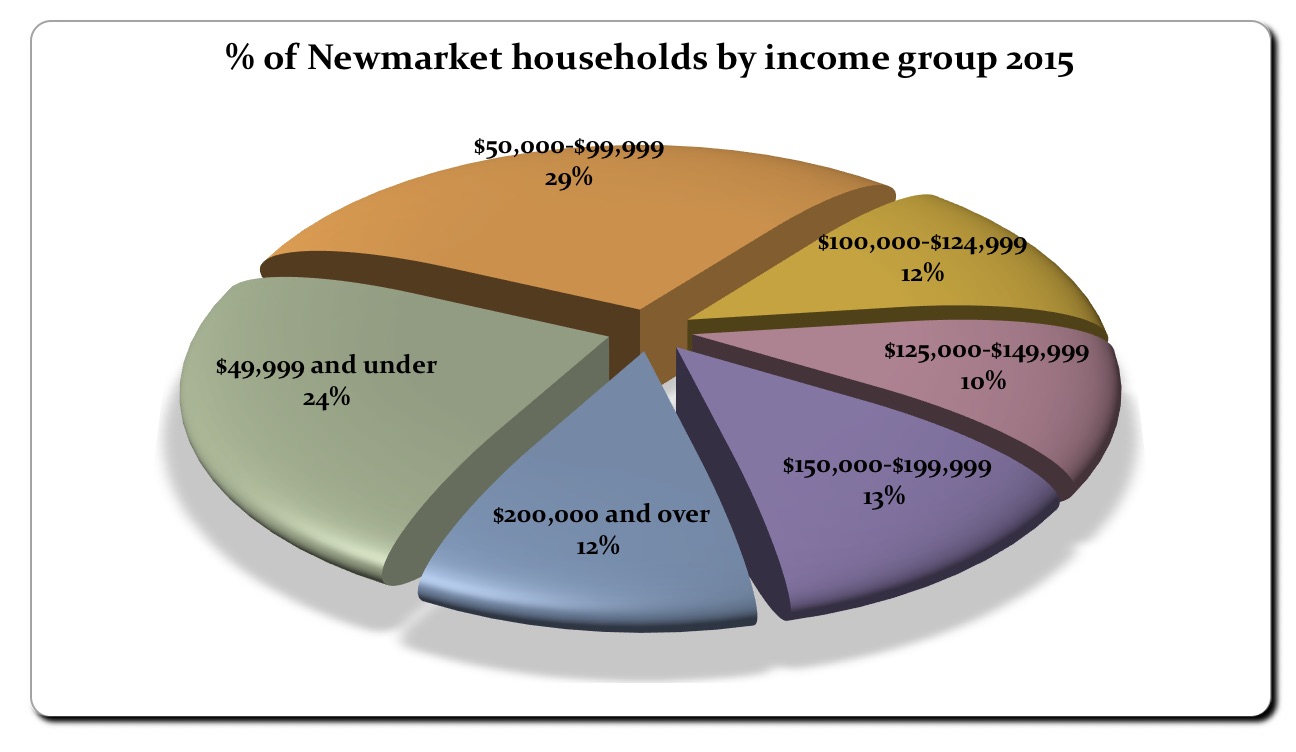
As it happens, I have been wondering if such an unusually well-heeled family of five actually exists anywhere in Newmarket (or Aurora) where the average household size is 2.94 persons.
Above average incomes
Generally speaking, Newmarket and Aurora are well-off towns with higher than average incomes but there are thousands of people struggling to get by and pockets of deep poverty. (The pie chart on the right shows total household income.)
Most people in York Region – and here in Newmarket - can only dream about getting $130,000 a year, thereby qualifying for the $200 tax hike which Doug vows to scrap.
Unaffected
Over 83% of Ontario’s 11m tax filers are entirely unaffected. The Budget document tells me about 680,000 individuals would see a reduction of about $130 in their income tax on average.
Doug thinks this is a tax grab. The Provincial Government says it’s a bit of overdue spring cleaning – getting rid of surtax and bringing in seven Personal Income Tax rates making the tax regime a bit more progressive. (You can read the Budget speech here.)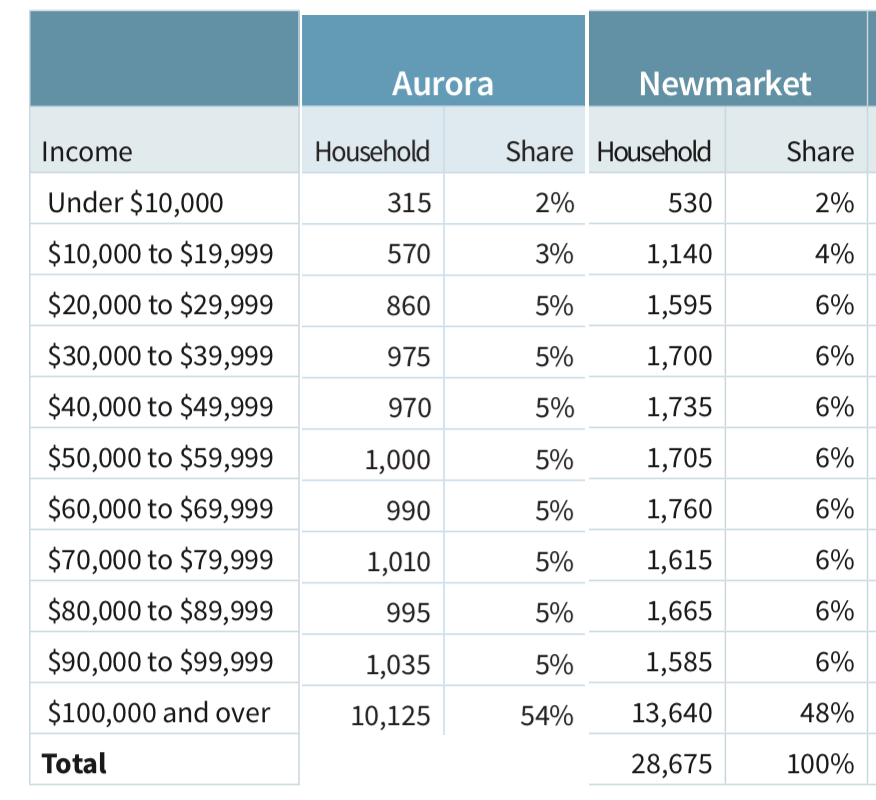
The Liberal Government has now laid out its stall but what are the PCs offering?
At the moment, not a lot.
Policy vacuum
I am looking forward to reading Doug’s election platform to see how he makes his sums add up. Cos at the moment they don’t.
Perhaps he will take Jamie Watt’s advice and just be himself, leaving policy detail to others. Watts says
“Unfiltered Ford has the best chance”.
I doubt it.
Soundbites and empty slogans won’t cut it in this election. Doug has got to come up with concrete policies and costed programmes.
Or be relentlessly mocked for being all mouth but with nothing to say.
This email address is being protected from spambots. You need JavaScript enabled to view it.
Update on 1April 2018: Blog now shows number of taxpayers getting a tax cut.
- Details
- Written by Gordon Prentice
580 new jobs were created in Newmarket from 2016 to 2017 – an employment growth rate of 1.4%.
Our neighbour to the South, Aurora, saw 1,070 new jobs created over the same period – a growth rate of 4.5%. 
Aurora consistently beats Newmarket in job creation. Since 1998 Newmarket has seen 9,600 new jobs. Aurora, 13,950.
Over the last decade Newmarket has seen an average annual business growth of 0.9%. The comparable figure for Aurora, 2.8%.
Why does Aurora grow more jobs?
Why is this? Does Aurora have more employment land? Or is it because it is closer to Toronto? Or are housing options more varied? What exactly are the factors?
You can see all the figures here in the 2017 Employment Survey Results for the nine municipalities of York Region.
There was a terrible kerfuffle three years ago when the Region published figures which suggested Newmarket had seen a paltry 100 jobs created over the period 2009-2014. At the time, I was sitting in on a York Region meeting and observed the look of incredulity on the faces of John Taylor and Tony Van Trappist.
Indeed, Van Trappist was actually moved to say something - as was Taylor. (The 100 figure was subsequently revised upwards.) Since then the Employment Surveys for individual municipalities are no longer front and centre. At York Region they’ve taken a back seat to region-wide figures and analysis. That way less likely to cause embarrassment.
As it happens, the Town’s Economic Development Officer, Chris Kallio, gave a presentation to the Committee of the Whole on 26 February 2018 entitled: 2017 Economic Development: the Year in Review.
Upbeat and breathless
It is all very upbeat and breathless with lots of pace, flagging up big new employers such as Celestica (a high tech company) and Gin-Cor (who make specialist vehicles) that are moving into Town. You can see the presentation which comes at the start of the meeting here on You Tube. 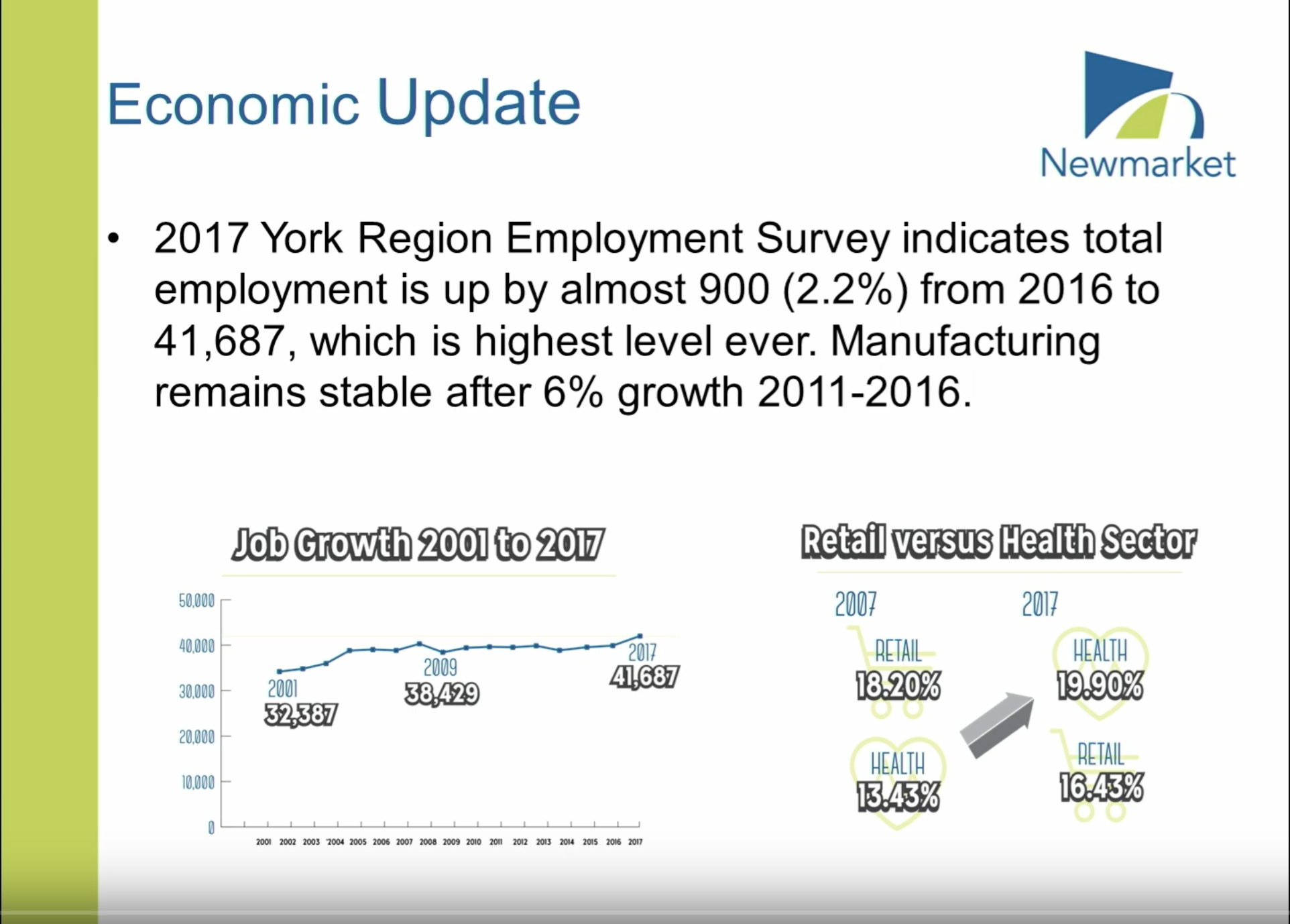
But instead of the 580 new jobs I was expecting I see 900 and instead of employment growth of 1.4% I see 2.2%
The slide alongside credits the information as coming from the 2017 York Region Employment Survey. Perhaps the Town uses the calendar year whereas the Region uses the survey period from mid-year 2016 to mid-year 2017. Perhaps the answer lies in the definition of "total employment". In any event it is important we compare apples with apples, especially in an election year.
Big new employers not in the latest figures
John Taylor, who sits on the Regional Council, asks if the 2017 figures include the numbers from Celestica and Gin-Cor and is told no.
He points to jobs on the way at Upper Canada Mall, the Oskar Building on Davis Drive and the old Price Chopper on Leslie Street which is morphing into a new medical centre. He is upbeat.
You can read York Region’s 2017 Economic Development Review here and the Region’s February report here which focusses more on job growth.
York Region is on steroids, growing fast:
Employment growth in York Region has outpaced national, provincial and Greater Toronto Area (GTA) employed labour force growth between mid-year 2016 and mid-year 2017, posting a gain of 3.3%, a slightly lower growth rate than 2016 (3.6%).
Over the past five years York Region has grown at an average annual rate of 3.2%, outperforming growth rates in the national (2.1%), provincial (1.8%) and GTA (1.4%) economies.
According to York Region’s employment survey, employment rose to an estimated 620,530 jobs in 2017, an increase of 3.3% or 19,780 jobs from 2016.
But, worryingly, the big growth in contract work continues.
Between 2007 and 2017 the number of contract/seasonal/temporary employees has been steadily increasing. In 2007 the share of this employment category was 4.5%, while in 2017 it was 13.4%. As the share of contract/seasonal/temporary employment increases, full-time employment has decreased from 76% in 2007 to 69% in 2017. Although full time employment remains strong, the steady increase of contract/seasonal/temporary employment is indicative of the shifting job market since the 2008-2009 economic downturn and the rise of contract work that followed.
Precarious employment is a big and growing issue.
Time for us to wake up and take notice.
This email address is being protected from spambots. You need JavaScript enabled to view it.
Page 157 of 287
